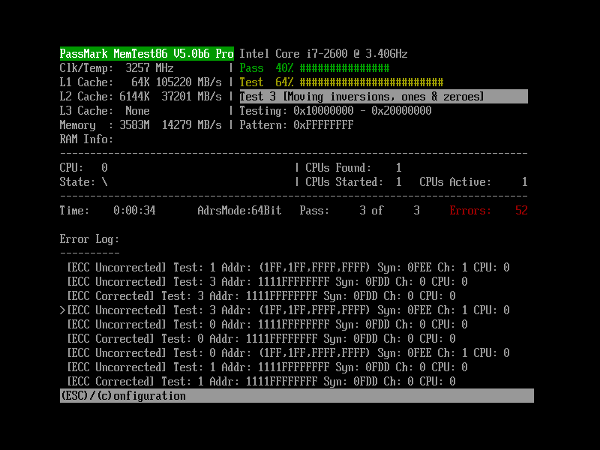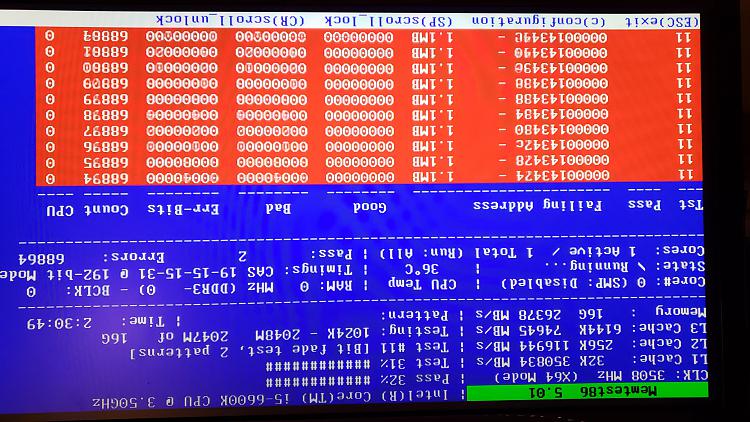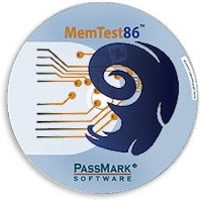

By default, this value is 256 (Pro Edition) and 16 (Free Version). However, there are testing algorithms that can approximate this ideal and MemTest86does just this.Īdded new config file parameter, 'MAXCPUS', for setting the maximum number of CPU logical cores used for testing. In addition there are a never ending number of possible chip layouts for different chip types and manufacturers making this strategy impractical. It should be obvious that this strategy requires an exact knowledge of how the memory cells are laid out on the chip. Write all of the adjacent cells with a one, one or more times.Ĭheck that the first cell still has a zero. Therefore, an ideal strategy for testing memory would be the following An effective memory test attempts to test for this condition. Often writing a memory cell can cause one of the adjacent cells to be written with the same data.

The vast majority of the intermittent failures are a result of interaction between these memory cells. RAM chips consist of a large array of tightly packed memory cells, one for each bit of data. BIOS based memory tests are useless for finding intermittent memory errors. This works fine for hard memory failures but does little to find intermittent errors. However, many tests simply throw some patterns at memory without much thought or knowledge of memory architecture or how errors can best be detected.


There are many good approaches for testing memory. The answer to the question regarding the working state of the installed memory modules comes fast with Memtest86 and that is what matters the most besides the certainty of the verdict. Memtest86 is considered by the majority of the hardware testing community the number one application when it comes to defective RAM sticks.


 0 kommentar(er)
0 kommentar(er)
